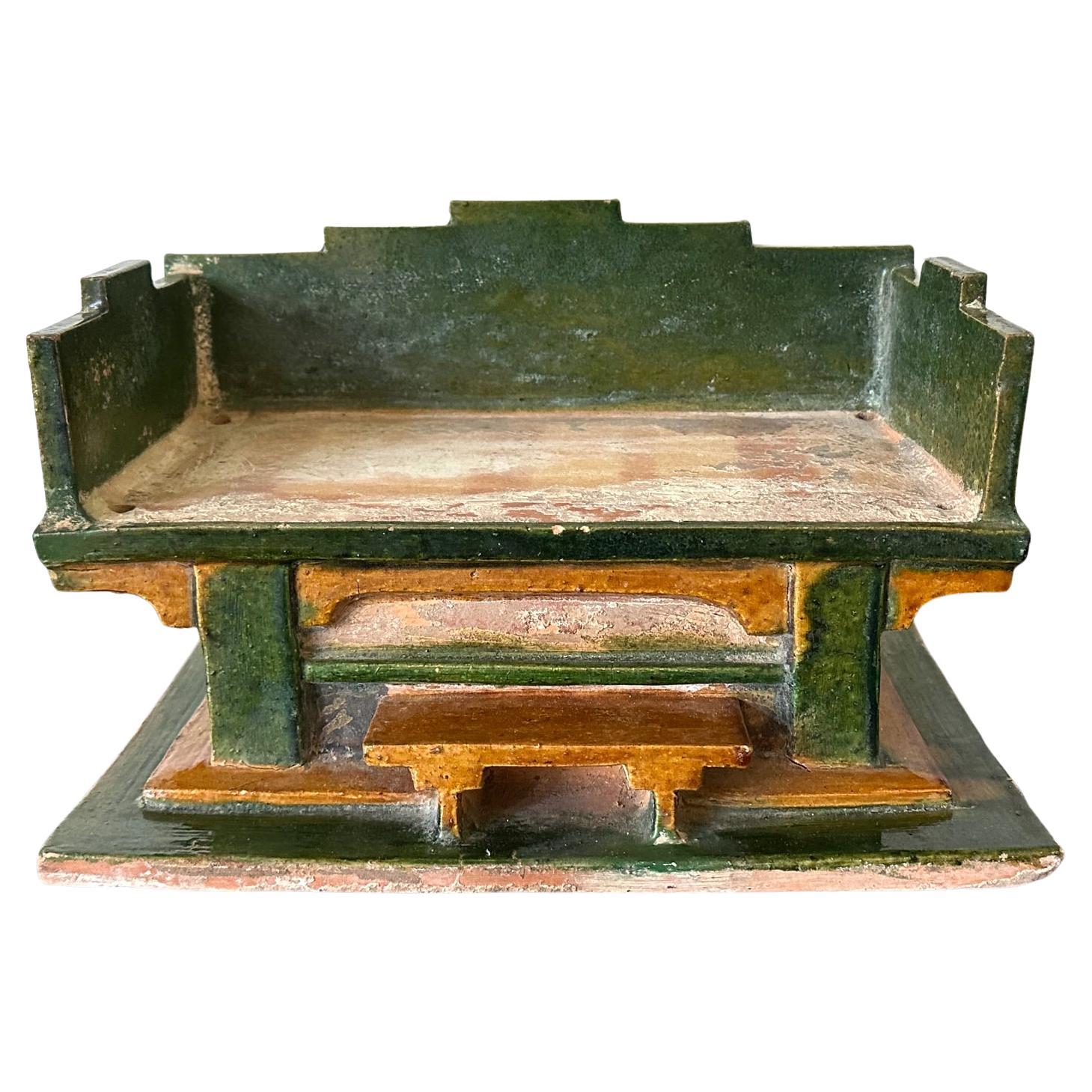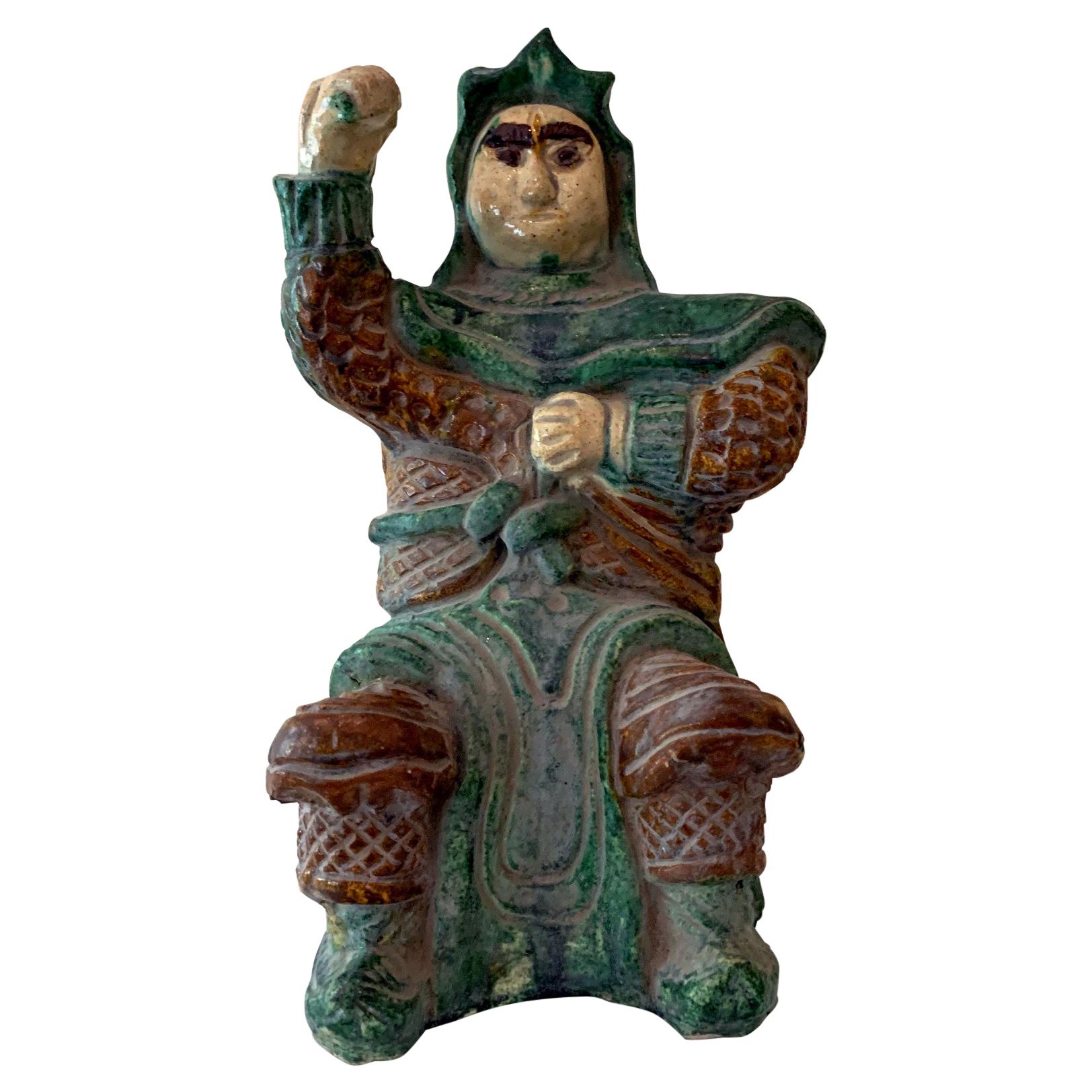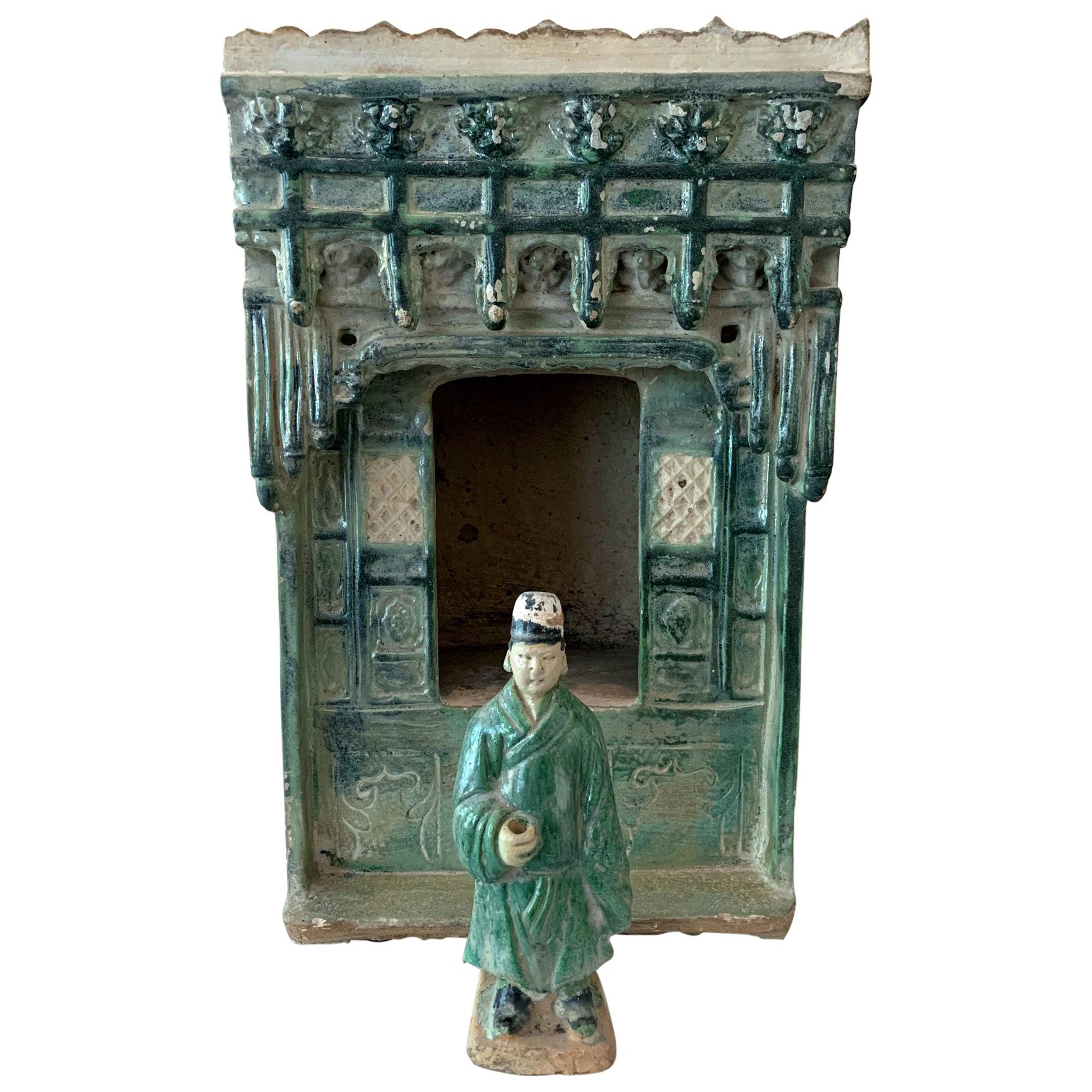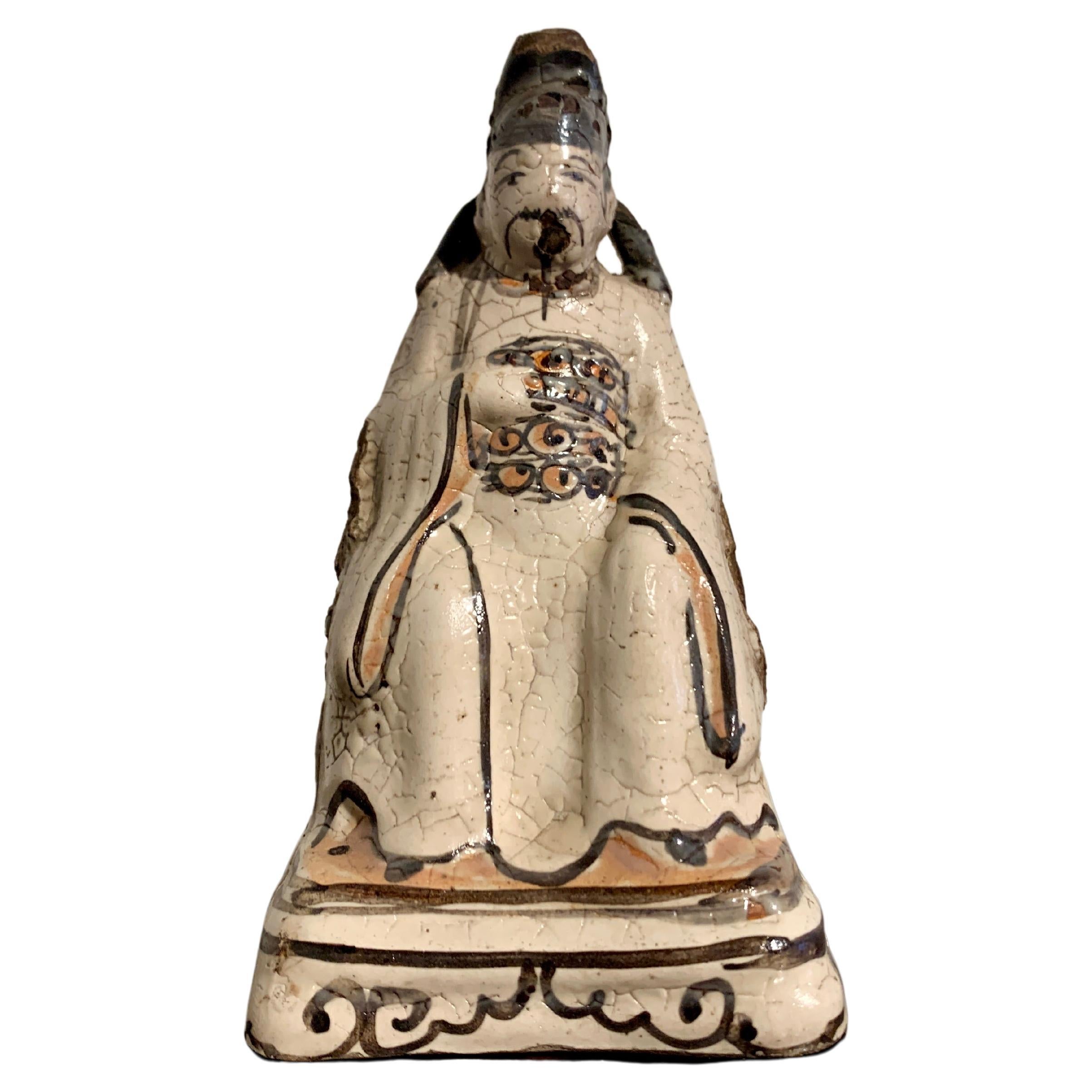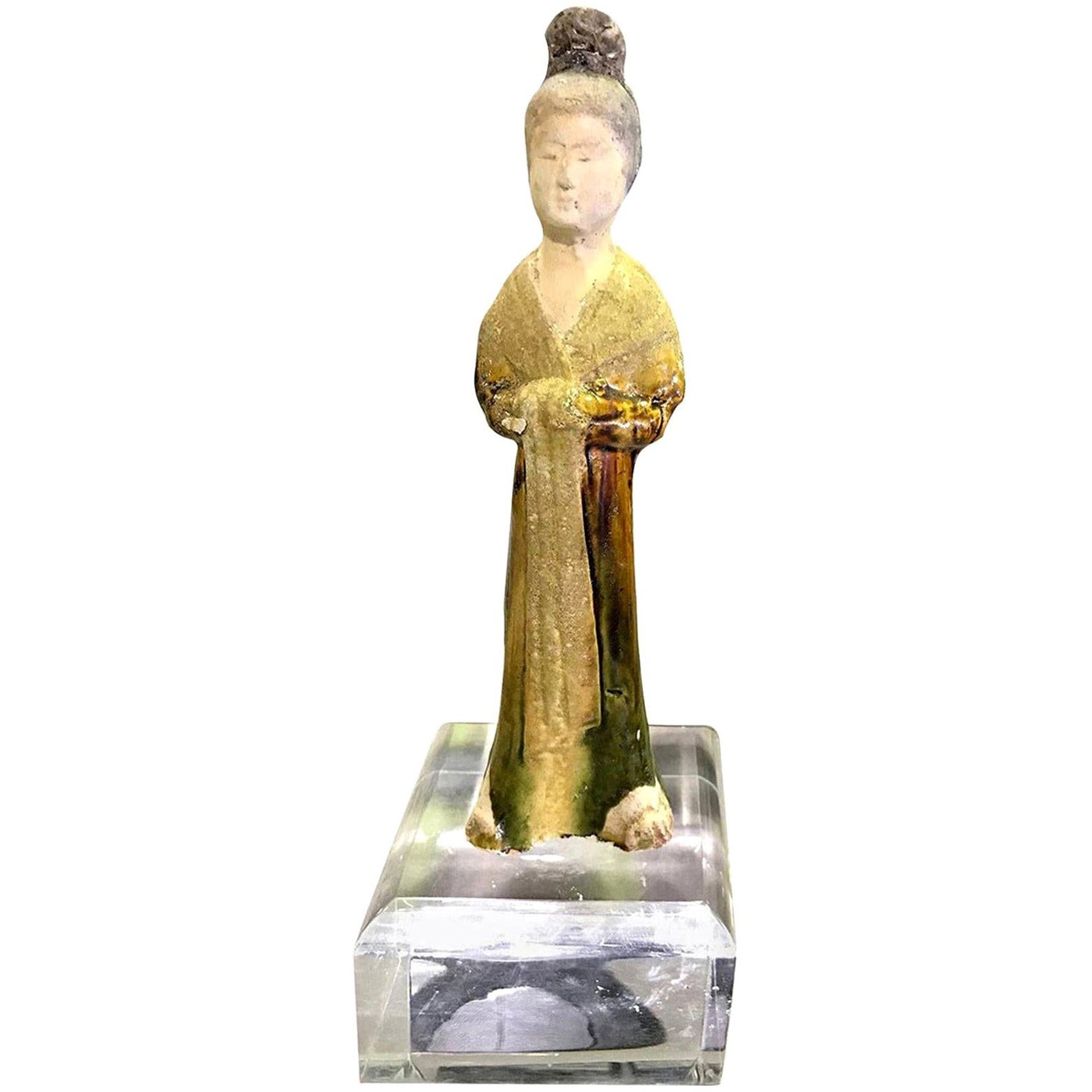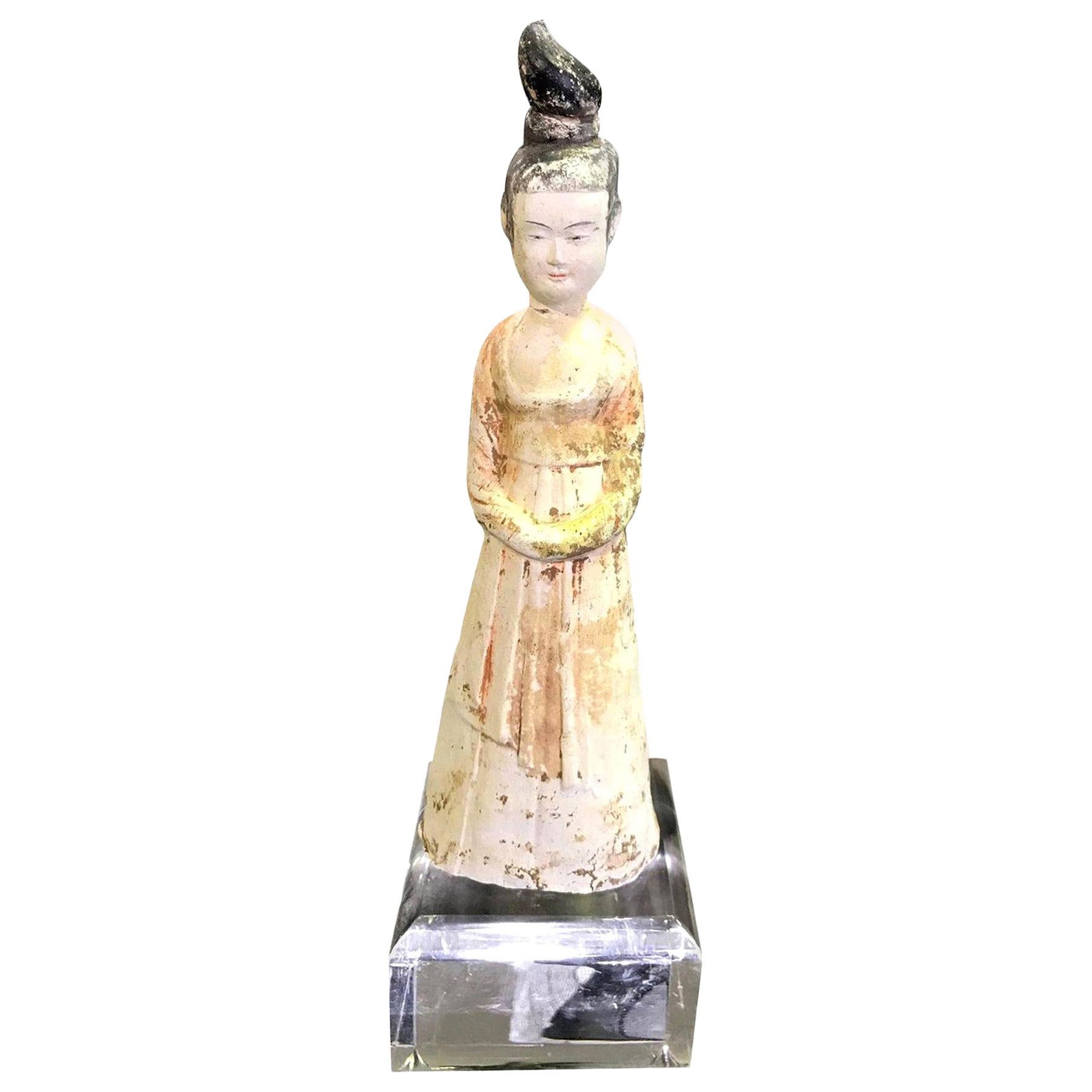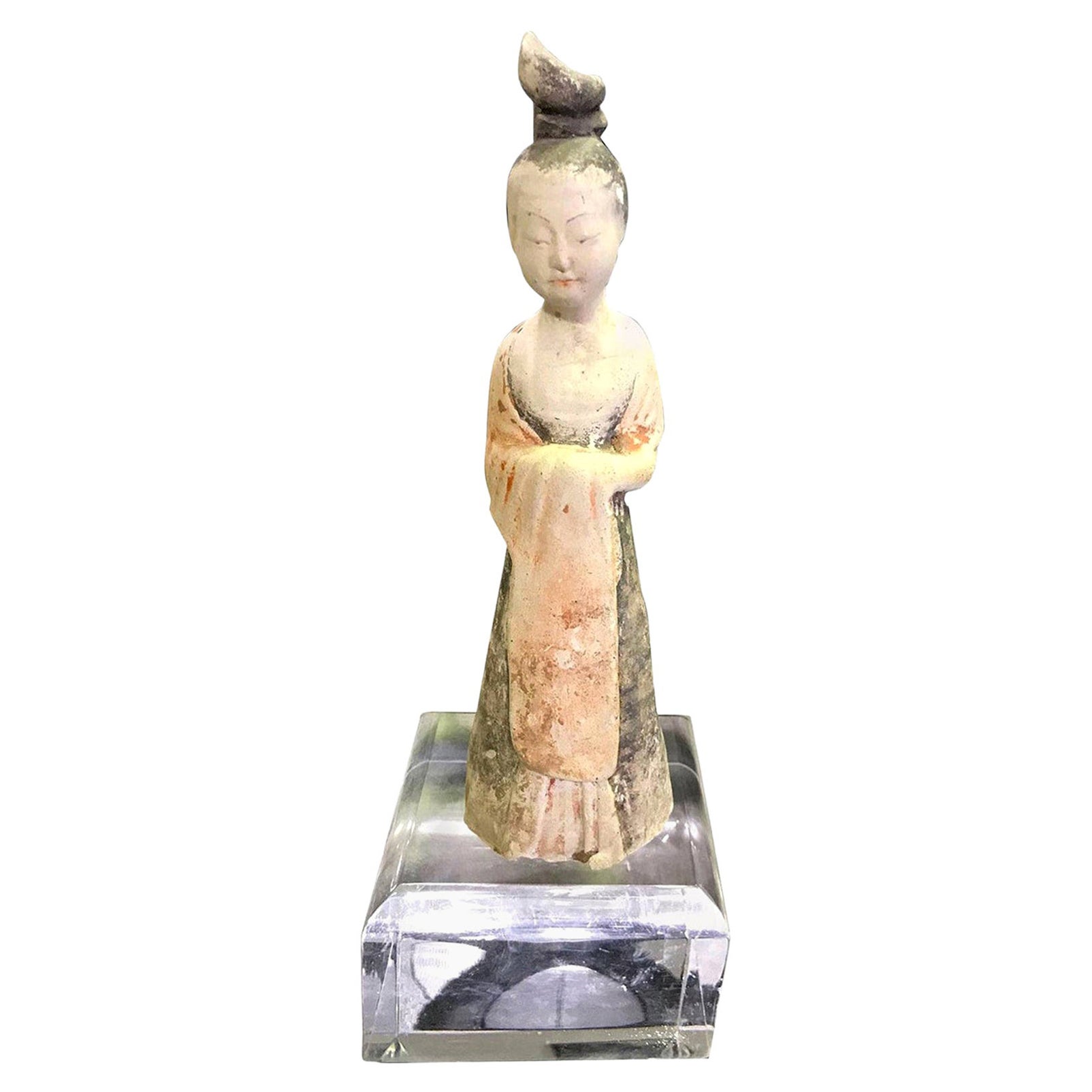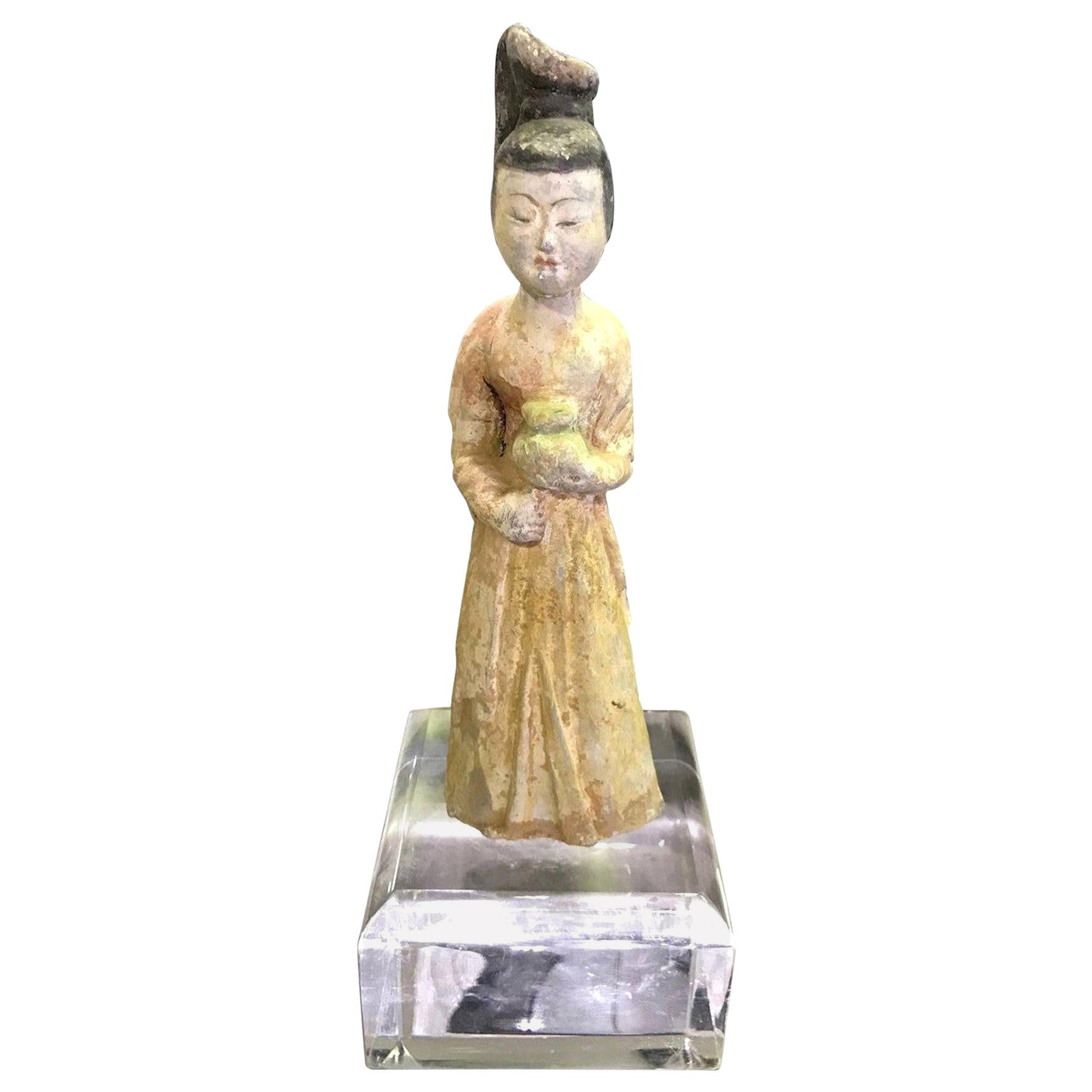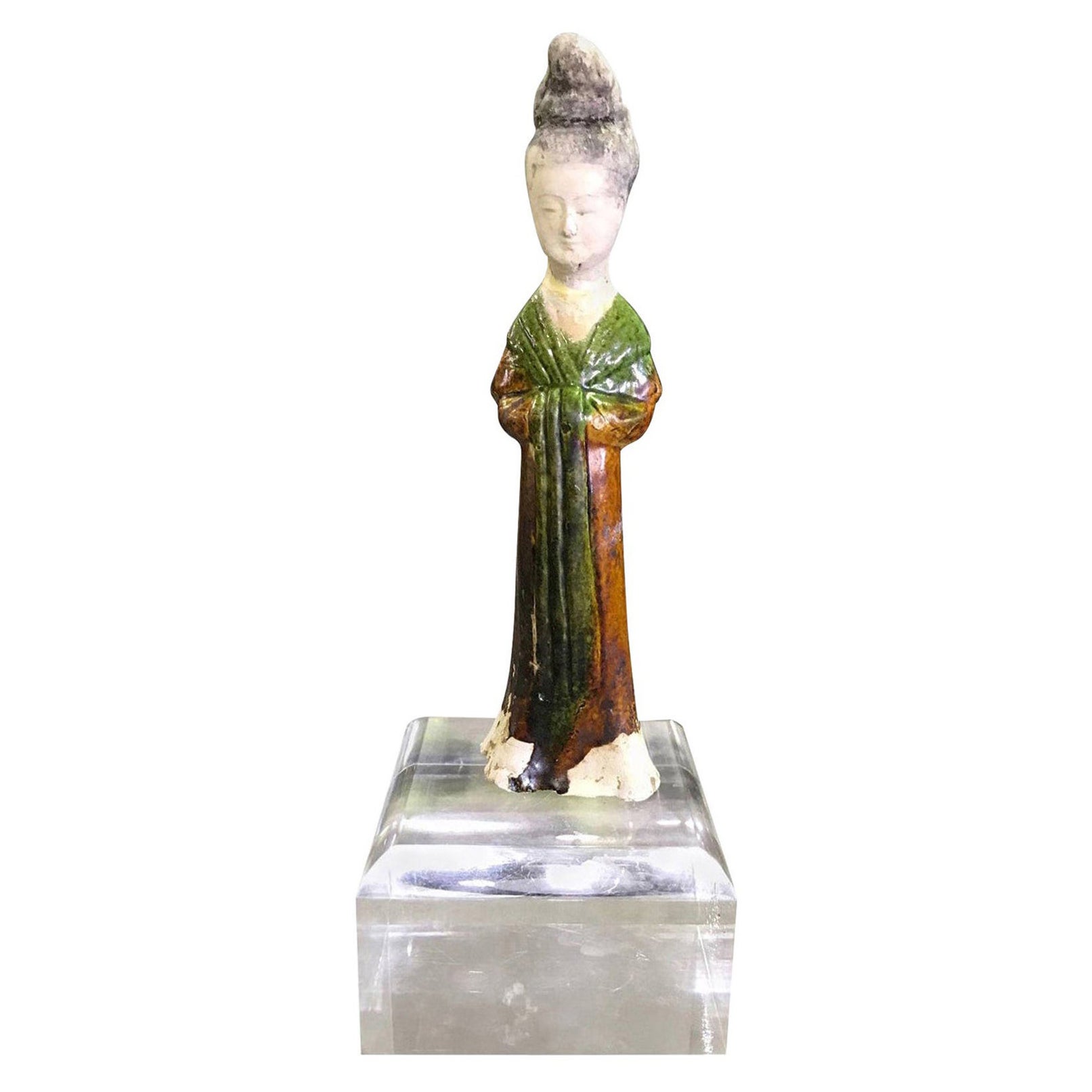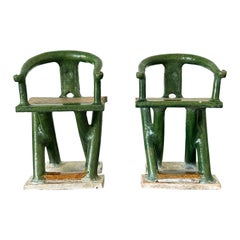Chinese green glazed Pottery Model of a Caparisoned Horse, Ming Dynasty, 17thc
View Similar Items
Want more images or videos?
Request additional images or videos from the seller
1 of 10
Chinese green glazed Pottery Model of a Caparisoned Horse, Ming Dynasty, 17thc
About the Item
- Dimensions:Height: 11.5 in (29.21 cm)Width: 13.5 in (34.29 cm)Depth: 4 in (10.16 cm)
- Style:Ming (Of the Period)
- Materials and Techniques:Terracotta,Glazed
- Place of Origin:
- Period:
- Date of Manufacture:16th Century
- Condition:Wear consistent with age and use. Minor losses. Minor fading.
- Seller Location:South Burlington, VT
- Reference Number:1stDibs: LU128924579693
About the Seller
5.0
Gold Seller
These expertly vetted sellers are highly rated and consistently exceed customer expectations.
Established in 1990
1stDibs seller since 2015
2,214 sales on 1stDibs
Typical response time: 1 hour
More From This SellerView All
- China Antique Pair "Spirit Path" Horse Sculptures, Ming Dynasty 500 Years OldLocated in South Burlington, VTChina, a monumental pair (2) of 500 year old lime stone “Spirit Path” Equine horse head sculptures. Ming dynasty, (1368-1644 CE). A pair of near life size and robust head sections with fine, wavy combed manes, well defined mouths, ears, nostrils, and ornamental bridles, all carved in a medium to dark gray limestone with considerable weathering to surfaces. The smaller head with a later inscription on bottom and signed “Zhuang”. Formerly exhibited “Treasures from Asia”, Shelburne Vermont, Shelburne Art Center, 2006. Originally found in the vicinity of the village of Chuan near Luoyang City, Henan Provance, China. Each mounted on a custom iron display stand. Dimensions: A the smaller 32.5cm, 13” high and 62.5cm, 25” in length and with display stand, 60cm, 24” high; b the larger 37.5cm, 15” high and 67.5cm, 27” in length and with display stand 65cm, 26” high. Please view additional photographs from our Chinese antiquities catalog 35 Years Collecting 35 Treasures, page 60. History: Placing stone animals and human figures along spirit paths in front of important tombs can be traced back at least to the Qin Dynasty (221-206 BCE), some two thousand years ago. In ancient times, stone animals and human figures placed before imperial tombs symbolized royal power and privilege in addition to decorative functions. Life size “spirit path” stone horse sculptures are known and can be viewed from Ming dynasty tombs including thirteen imperial tombs of the Ming Dynasty scattered over an area of forty square kilometers in Changping District to the northwest of Beijing. The first Ming tomb...Category
Antique 16th Century Chinese Ming Statues
MaterialsLimestone
$28,000 Sale Price41% Off - Important Ancient Chinese Effigy Pug Dog, Ming Dynasty 1368-1644Located in South Burlington, VTChina, a carving of a canine “Pug”, Ming Dynasty, 1368-1644 CE Dimensions: 38 cm, 15” High Photographs taken indoors and out of doors for your viewing pleasure. The hand carved limestone beast shown on its haunches with naturalistic joyful expression and a well defined compact head, ears, noes, eyes, feet, and tail parted to one side on reverse with distinctive collar ornament seated four square on a thick base all-over showing a weathered surface from significant age. Formerly exhibited “Asia Week” New York City, Fuller Building, Hutton Gallery 2006. Provenance: ex collection luoyang, Henan Province, China. Includes custom display base as shown Catalog reference: 35 years collecting 35 treasures, Number 35, p.76 (photo) In ancient China, it is a well-known fact that several types of small dogs were bred and were favored pet gifts between emperors and kings including Lion Dogs, Pekingese and Lo-sze breeds. Some Lo-sze are pictured wearing collars with bells a frequent combination fancied by European royalty of the seventeenth and eighteenth centuries. Lo-sze or pugs were prized for their compact body, good bones, flat face, square jaw, short coat, curled tail, side set back ears, and temperate disposition. History: Placing stone animals in important tombs can be traced back at least to the Qin Dynasty (221-206 BCE), some two thousand years ago. In ancient times, stone animals and human figures placed before imperial tombs symbolized royal power and privilege in addition to decorative functions. The first Ming tomb...Category
Antique 15th Century and Earlier Chinese Ming Sculptures and Carvings
MaterialsLimestone
- Japanese Fine Large Rooster And Birds Tea Bowl, Hand-Built and Hand GlazedLocated in South Burlington, VTMint Kyo ware bowl From Japan, a beautiful hand-built, painted and glazed, Kyo ware large bowl or large tea bowl with a proud rooster and birds motif created in the 1930s.- over se...Category
Vintage 1930s Japanese Showa Ceramics
MaterialsCeramic, Pottery
$76 Sale Price20% Off - Japanese Huge Antique Year Of Dragon Blue Dragon Vase, Brilliant Color, 37 InchLocated in South Burlington, VTJapan, an exceptionally tall 37" antique monumental monochrome blue cobalt crackle glazed dragon vase with a dramatic and impressive "curling dragon" wrapped around its stem. It was crafted by the master artisans of the Japanese southern Awaji Kiln, from the late Meiji to Taisho period (1910-1920). The impressive porcelain vase crafted in a tubular modernist form with an original brilliant blue tone glazed finish and with an applied curling dragon sculpture. It is unsigned as many normally were from that period and is in original condition with normal kiln origination surface creation imperfections. Dimensions: 37 inches tall and 8.5 inches diameter top and with an 13 inch diameter widest diameter Provenance: private New England collection. Undoubtedly influenced by the modernist movement and more likely by the visit to the Awaji kilns by the noted English designer Christopher Dresser of Linthorpe Art...Category
Early 20th Century Japanese Taisho Sculptures and Carvings
MaterialsCeramic, Pottery
$1,920 Sale Price60% Off - Japan Antique Set Three Brilliant Color Hand Painted Garden Bowls, 1910Located in South Burlington, VTFrom our recent Japanese Acquisition Travels- matching set three (3) three gorgeous hand painted bowls from Japan in their original tomobako box. Japan hard to find early set of th...Category
Early 20th Century Japanese Taisho Sculptures and Carvings
MaterialsCeramic
- Japan Beautiful Largest Antique Hand Painted Kutani Garden Bowl, 1910Located in South Burlington, VTFrom our recent Japanese Acquisition Travels- a lovely big 14 inch diameter hand painted bowl from Japan. Japan hard to find early hand painted ceramic lush "garden scene" serving bowl, circa 1910. Inside painting depicts elite individual with his attendants seated amidst a three some of cranes, plush patterns, foliage and seas. The exterior a dragon style...Category
Early 20th Century Japanese Meiji Sculptures and Carvings
MaterialsCeramic
You May Also Like
- Chinese Ming Dynasty Tomb Funeral Pottery Bed ModelLocated in Atlanta, GAA Chinese stoneware day bed model circa Ming dynasty (15th-17th century). The miniature models were traditionally made as burial offering objects. Pottery models of daily life necess...Category
Antique 16th Century Chinese Ming Ceramics
MaterialsStoneware
- Chinese Ming Dynasty Tomb Funeral Pottery Bed ModelLocated in Atlanta, GAA Chinese stoneware day bed model circa Ming dynasty (15th-17th century). The miniature models were traditionally made as burial offering objects. Pottery models of daily life necess...Category
Antique 16th Century Chinese Ming Ceramics
MaterialsStoneware
- Pair of Chinese Ming Dynasty Tomb Funeral Pottery Chair ModelsLocated in Atlanta, GAA pair of Chinese stoneware horseshoe cross chairs circa Ming dynasty (15th-17th century). The miniature models were traditionally made as burial offeri...Category
Antique 16th Century Chinese Ming Ceramics
MaterialsStoneware
- Chinese Ceramic Glazed Guardian Ming DynastyLocated in Atlanta, GAA stoneware figure depicting a seated armored warrior with a striking pose circa 15th-17th century. He is likely one of the four heavenly kings, th...Category
Antique 16th Century Chinese Ming Ceramics
MaterialsStoneware
- Chinese Stoneware Funeral Shrine Model and Figure Ming DynastyLocated in Atlanta, GAA stoneware shrine model with a figurine made in Ming dynasty (15th-17th century) in China and used as funeral burial objects. It is not known whether the two objects were originally associated, but they display similar glaze and oxidation and were in the same collection. The stoneware building is an architectural rendering of a typical ancestor shrine used at the time. It features a single room behind an elaborate front with double doors, under a multiple layered eaves. There are great architectural and decorative details throughout. The green glaze shows a wonderful silvery oxidation, an indication that the piece was buried in the ground. The side appears to be glazed lightly originally and some scrape marks and oxidized glaze residues remains. The back is unglazed. The figure is a typical tomb figurine...Category
Antique 16th Century Chinese Ming Ceramics
MaterialsStoneware
- Chinese Small Cizhou Glazed Figure of a Daoist Deity, Song to Ming DynastyLocated in Austin, TXA small and charming Chinese cizhou ware glazed pottery figure of a Taoist deity or official, Song to Ming Dynasty, 13th - 15th century, China, ex. Christi...Category
Antique 15th Century and Earlier Chinese Ming Sculptures and Carvings
MaterialsStoneware
Recently Viewed
View AllMore Ways To Browse
Antique Asian Art Jade
Asian Harbor
Model 149
Antique Bar Harbor
Antique Bar Harbor Furniture
Green Basin
Old Chinese Jade
Chinese Ming Dynasty Pottery
Chinese Pottery Horse
Chinese Antique Glazed Red
Mounting Antique Japanese Screens
Pottery Buddha
Red Chinese Lantern
Ming Horse
Antique Pottery Containers
Antique Horse Ornament
Black Antique Asian Screens
Glazed Horses Chinese

